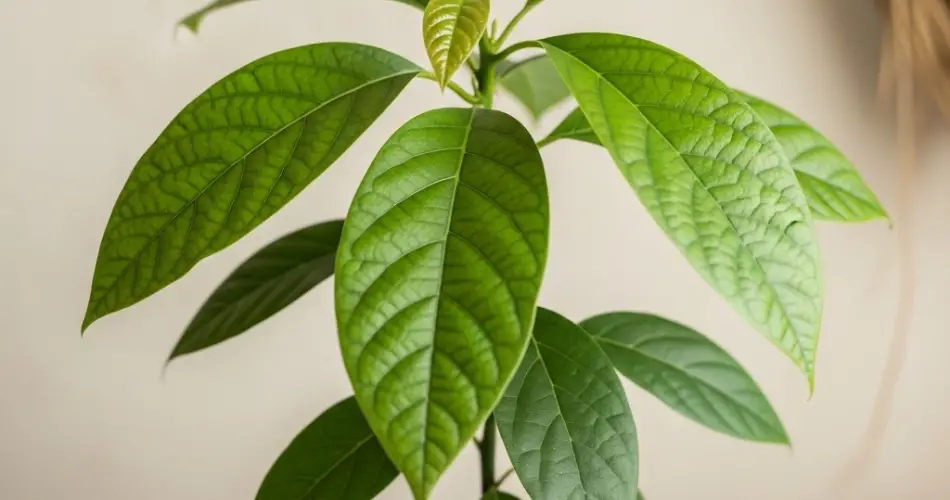Avocado trees are not only popular for their delicious, nutrient-rich fruit but also for their attractive, lush foliage that adds a tropical flair to gardens and patios. Whether you’re growing an avocado tree from seed or starting with a young grafted tree, proper care is essential to ensure healthy growth and productive harvests. With the right conditions and maintenance, your avocado tree can thrive for years. Here’s a detailed guide on how to care for avocado trees at home.
1. Choose the Right Avocado Variety
Before planting, it’s important to select a variety suited to your climate and growing space. The three main types are:
-
Hass: The most common variety, known for its rich, creamy flesh. Best for warm, subtropical to mild temperate climates.
-
Fuerte: A hybrid of Mexican and Guatemalan types, it’s cold-tolerant and productive.
-
Bacon or Zutano: Better suited for cooler areas, with a milder flavor.
Grafted trees are recommended over seedlings if your goal is fruit production, as they bear fruit faster and more reliably.
2. Ideal Growing Conditions
Avocado trees thrive in warm, sunny environments and well-draining soil. They do best in USDA zones 9 through 11, but can also be grown in containers in cooler regions and moved indoors during colder months.
Sunlight:
Provide at least 6–8 hours of direct sunlight daily. A sunny south-facing location is ideal.
Soil:
Use loose, fertile, and well-draining soil. Avocados dislike waterlogged roots, so avoid heavy clay soils or amend them with sand and compost. The ideal soil pH is 6.0 to 7.0.
Temperature:
Avocados prefer temperatures between 60–85°F (15–29°C). Young trees can be sensitive to frost, so protect them during cold snaps with covers or by bringing potted trees indoors.
3. Watering Tips
Consistent and appropriate watering is key to a healthy avocado tree. Too much or too little water can lead to stress or disease.
Watering guidelines:
-
Water deeply but infrequently, allowing the top 1–2 inches of soil to dry out between waterings.
-
During the growing season (spring and summer), water more regularly.
-
Reduce watering in fall and winter, when the tree’s growth slows down.
-
Ensure containers have drainage holes to prevent root rot.
Watch for signs:
Yellowing leaves may signal overwatering, while dry, curling leaves may indicate under-watering.
4. Fertilizing Your Avocado Tree
Fertilizing helps support the tree’s vegetative growth and future fruit production.
When to fertilize:
-
Begin feeding in early spring and continue through late summer.
-
Avoid fertilizing in fall and winter.
What to use:
-
Use a balanced fertilizer (e.g., 10-10-10) for young trees.
-
For mature trees, switch to a fertilizer higher in nitrogen or use a blend designed for citrus and avocado.
-
Organic options include compost, fish emulsion, or seaweed extract.
Feed container-grown trees monthly, while in-ground trees can be fertilized every 2–3 months.
5. Pruning for Shape and Strength
Pruning helps shape the tree, encourage branching, and control size—especially in small gardens or containers.
Pruning tips:
-
Prune lightly in late winter or early spring before new growth appears.
-
Remove dead, crossing, or inward-growing branches.
-
Pinch back the tips of young plants to encourage bushier growth.
Avoid excessive pruning, as it can reduce fruit production.
6. Pest and Disease Management
Avocados are generally hardy, but they can still face a few common problems.
Watch out for:
-
Spider mites, thrips, or aphids: Treat with insecticidal soap or neem oil.
-
Root rot: Caused by overwatering or poor drainage.
-
Anthracnose: A fungal disease that affects fruit. Improve airflow and remove infected parts.
To prevent issues, keep the area around the base clear of fallen leaves, provide good air circulation, and avoid letting the soil stay soggy.
7. Container Care for Potted Avocados
If you’re growing your avocado in a pot, it’s important to ensure the container is large enough—start with one that’s at least 15–20 gallons. As the tree grows, repot it every couple of years.
Tips:
-
Use lightweight potting mix with added perlite or sand.
-
Place the pot in a location with full sun.
-
Monitor soil moisture more closely, as potted plants dry out faster.
Container-grown avocados may be smaller in size but can still be productive and easier to manage in limited spaces.
8. Patience for Fruit Production
Avocado trees take time to bear fruit. Grafted trees may start producing in 3–4 years, while trees grown from seed can take 7–10 years or more, and may not produce fruit at all.
For better fruit set:
-
Grow more than one tree for cross-pollination.
-
Choose a self-fertile variety like ‘Hass’ if planting a single tree.
-
Ensure proper care and avoid heavy pruning during flowering.
Final Thoughts
Caring for an avocado tree requires patience, sunlight, and consistent attention to watering and soil quality. With proper care, your avocado tree can reward you with years of lush foliage and—eventually—delicious fruit. Whether grown in a garden or a large container, avocados make a beautiful and practical addition to any plant lover’s home.



